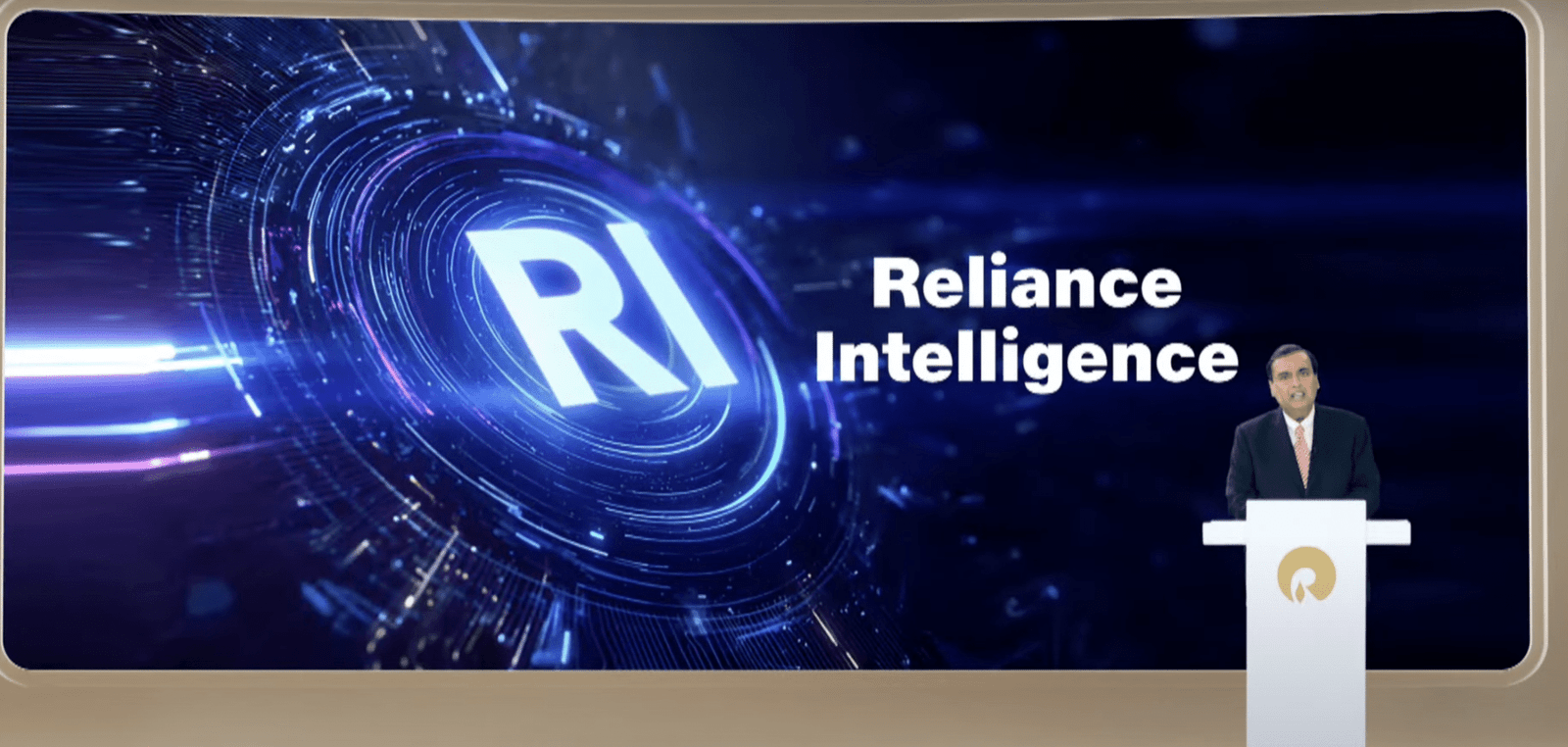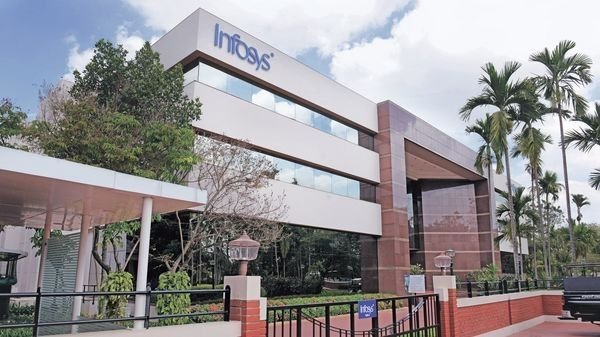Jobs & Careers
AI Exposes the Flaws You’ve Been Ignoring. A Wake Up Call for Architects!

As Artificial Intelligence evolves, so should the architecture behind the systems. It is not enough to bolt on to AI; it must be integrated into data, infrastructure, applications, and user experience.
Traditional architecture is no longer fit for the pace and demands of AI evolution, said Bala Prasad Peddigari, chief innovation officer (Technology Software and Services Business Group) at TCS, as he cut to the heart of a pressing industry dilemma, during his address at the NIIT StackRoute Digital Architect Conclave 2025.
In today’s world, he said, traditional architectures are showing cracks. “We’re facing performance bottlenecks, scalability limitations, and integration complexities.” Many pilots in AI remain unscalable because they lack foundational AI-ready architectures.
Peddigari questioned the audience: “Are architects drafting blueprints, or are they navigating AI battlefields?” The answer, he believes, is clearly the latter.
Most architects are reacting to the speed of change, rather than leading it. He cited a CTO who admitted buying AI tools without preparing the underlying architecture to support them, something he called the “architect’s dilemma”.
Tracing the journey from rudimentary client-server models to today’s AI-native imperatives, Peddigari set the tone with an anecdote, an encounter with a manufacturing firm plagued by 100 system shutdowns a day.
The issue wasn’t just technological. “Is it an architectural issue, a philosophy issue, or is it a code issue?” were the questions asked, according to him. The answer, as it turned out, lay in their mounting technical debt and an inability to adapt.
Peddigari and his team replatformed the legacy-heavy operation by integrating IoT sensors and AI, reducing shutdowns to zero. The assembly line ran uninterrupted for 90 days. The transformation, he said, was driven not merely by technical fixes, but by deep understanding of business domains, architecture, and the discipline of marrying tech trends to real-world problems.
He compared this approach to Aadhaar’s simplification, from 20 fields to six, arguing that “removing the unnecessary” is what makes systems more intelligent, leaner, and functional. The crux of his talk was about architecting AI-native platforms, a term he views as both, a mindset and a capability.
AI-native platforms need this
Peddigari presented a layered framework that breaks down the building blocks of AI-native platforms. The central thesis, according to him, is that intelligence must be embedded from the ground up.
This means designing systems that are capable of data feedback loops, real-time monitoring, and “observability” — all vital to keeping AI systems aligned and operational. Data fabric, Peddigari stressed, is the core. Without intelligent pipelines, robust catalogs, annotation and privacy measures, models cannot thrive.
From there, he pointed to MLOps as essential for governing the lifecycle of models, from experimentation to drift detection. He also emphasised the importance of the experience layer, where AI becomes meaningful to users, and the trust layer, where fairness, safety, and explainability must be designed in, not added later.
The need for autonomous agents, orchestration layers, and LLM-powered cognition also surfaced in his breakdown of a modern digital intelligence framework. He advocated for a platform mindset, solutions must be scalable, not siloed. This includes planning for extensibility, low-code/no-code participation, and vibe coding acceleration, while recognising their current limitations at enterprise scale.
The three levels of maturity
He mapped out three levels of organisational AI maturity: siloed experimentation, sandboxed development, and true enterprise AI platforms. The last, he said, is where the vision lies , not only democratising AI, but institutionalising it. He called for cross-functional teams to collaborate, breaking silos between decision-makers, developers, data scientists, and architects.
Peddigari touched on the importance of GenAI Ops, governance, observability, and evaluation mechanisms tailored for generative models. He also explained how prompt engineering, plug-ins, and hierarchical agents must work in concert with authentication and orchestration to drive real business applications.
In their LinkedIn posts, Mahmoud Abufadda, senior consultant (Enterprise architecture, digital transformation, AI) at Moro Hub, and John Chavner, senior principal at Strategic Technology Advisory Services, both warn that AI is compelling enterprises to confront long-ignored architectural flaws.
Abufadda stressed that business architecture must evolve in step with AI’s rapid advances, embedding it into strategy, processes, and IT assets to avoid fragmented, unscalable efforts.
“Organisations must therefore incorporate AI into their strategic planning and enterprise architecture roadmaps, ensuring they build the capabilities today that will be standard in their industry tomorrow,” he said.
Chavner pointed out that legacy systems, designed for stability and monolithic operation, are fundamentally misaligned with AI’s requirements for seamless data access, real-time processing, and modular integration. Both caution that without foundational modernisation, AI initiatives risk stalling and eroding competitiveness.
“The cost of modernisation is substantial, but the cost of inaction is existential. Companies that delay AI implementation while competitors advance their capabilities face a future where their market positions become increasingly untenable,” said Chavner.
Peddigari’s concluding advice to architects was to start small, build iteratively, and embed AI into every workflow with intention. The goal, he said, is to move from interfaces to conversational interactions, from blueprints to real-time navigation.
Peddigari ended on a note of certainty. AI-native architecture is not optional. “From silicon to software systems, massive investments are being made. No industry will be left out,” he said, pointing to trends like GenAI and Quantum AI as the next frontiers.
Jobs & Careers
‘Reliance Intelligence’ is Here, In Partnership with Google and Meta

Reliance Industries chairman Mukesh Ambani has announced the launch of Reliance Intelligence, a new wholly owned subsidiary focused on artificial intelligence, marking what he described as the company’s “next transformation into a deep-tech enterprise.”
Addressing shareholders, Ambani said Reliance Intelligence had been conceived with four core missions—building gigawatt-scale AI-ready data centres powered by green energy, forging global partnerships to strengthen India’s AI ecosystem, delivering AI services for consumers and SMEs in critical sectors such as education, healthcare, and agriculture, and creating a home for world-class AI talent.
Work has already begun on gigawatt-scale AI data centres in Jamnagar, Ambani said, adding that they would be rolled out in phases in line with India’s growing needs.
These facilities, powered by Reliance’s new energy ecosystem, will be purpose-built for AI training and inference at a national scale.
Ambani also announced a “deeper, holistic partnership” with Google, aimed at accelerating AI adoption across Reliance businesses.
“We are marrying Reliance’s proven capability to build world-class assets and execute at India scale with Google’s leading cloud and AI technologies,” Ambani said.
Google CEO Sundar Pichai, in a recorded message, said the two companies would set up a new cloud region in Jamnagar dedicated to Reliance.
“It will bring world-class AI and compute from Google Cloud, powered by clean energy from Reliance and connected by Jio’s advanced network,” Pichai said.
He added that Google Cloud would remain Reliance’s largest public cloud partner, supporting mission-critical workloads and co-developing advanced AI initiatives.
Ambani further unveiled a new AI-focused joint venture with Meta.
He said the venture would combine Reliance’s domain expertise across industries with Meta’s open-source AI models and tools to deliver “sovereign, enterprise-ready AI for India.”
Meta founder and CEO Mark Zuckerberg, in his remarks, said the partnership is aimed to bring open-source AI to Indian businesses at scale.
“With Reliance’s reach and scale, we can bring this to every corner of India. This venture will become a model for how AI, and one day superintelligence, can be delivered,” Zuckerberg said.
Ambani also highlighted Reliance’s investments in AI-powered robotics, particularly humanoid robotics, which he said could transform manufacturing, supply chains and healthcare.
“Intelligent automation will create new industries, new jobs and new opportunities for India’s youth,” he told shareholders.
Calling AI an opportunity “as large, if not larger” than Reliance’s digital services push a decade ago, Ambani said Reliance Intelligence would work to deliver “AI everywhere and for every Indian.”
“We are building for the next decade with confidence and ambition,” he said, underscoring that the company’s partnerships, green infrastructure and India-first governance approach would be central to this strategy.
The post ‘Reliance Intelligence’ is Here, In Partnership with Google and Meta appeared first on Analytics India Magazine.
Jobs & Careers
Cognizant, Workfabric AI to Train 1,000 Context Engineers

Cognizant has announced that it would deploy 1,000 context engineers over the next year to industrialise agentic AI across enterprises.
According to an official release, the company claimed that the move marks a “pivotal investment” in the emerging discipline of context engineering.
As part of this initiative, Cognizant said it is partnering with Workfabric AI, the company building the context engine for enterprise AI.
Cognizant’s context engineers will be powered by Workfabric AI’s ContextFabric platform, the statement said, adding that the platform transforms the organisational DNA of enterprises, how their teams work, including their workflows, data, rules, and processes, into actionable context for AI agents.Context engineering is essential to enabling AI a
Jobs & Careers
Mastercard, Infosys Join Hands to Enhance Cross-Border Payments

Infosys has announced a partnership with Mastercard to make cross-border payments faster and easier for banks and financial institutions.
The collaboration will give institutions quick access to Mastercard Move, the company’s suite of money transfer services that works across 200 countries and over 150 currencies, reaching more than 95% of the world’s banked population.
Sajit Vijayakumar, CEO of Infosys Finacle, said, “At Infosys Finacle, we are committed to inspiring better banking by helping customers save, pay, borrow and invest better. This engagement with Mastercard Move brings together the agility of our composable banking platform with Mastercard’s unmatched global money movement capabilities—empowering banks to deliver fast and secure cross-border experiences for every customer segment.”
Integration will be powered by Infosys Finacle, helping banks connect with Mastercard’s system in less time and with fewer resources than traditional methods.
Pratik Khowala, EVP and global head of transfer solutions at Mastercard, said, “Through Mastercard Move’s cutting-edge solutions, we empower individuals and organisations to move money quickly and securely across borders.”
The tie-up also comes at a time when global remittances are on the rise. Meanwhile, Anouska Ladds, executive VP of commercial and new payment flows, Asia Pacific at Mastercard, noted, “Global remittances continue to grow, driven by migration, digitalisation and economic development, especially across Asia, which accounted for nearly half of global inflows in 2024.”
He further said that to meet this demand, Mastercard invests in smart money movement solutions within Mastercard Move while expanding its network of collaborators, such as Infosys, to bring the benefits to a more diverse set of users.
Infosys said the partnership will help banks meet growing consumer demand for faster and safer payments.
Dennis Gada, EVP and global head of banking and financial services at Infosys, said, “Financial institutions are prioritising advancements in digital payment systems. Consumers gravitate toward institutions that offer fast, secure and seamless transaction experiences. Our collaboration with Mastercard to enable near real-time, cross-border payments is designed to significantly improve the financial experiences of everyday customers.”
The post Mastercard, Infosys Join Hands to Enhance Cross-Border Payments appeared first on Analytics India Magazine.
-
Tools & Platforms3 weeks ago
Building Trust in Military AI Starts with Opening the Black Box – War on the Rocks
-

 Ethics & Policy1 month ago
Ethics & Policy1 month agoSDAIA Supports Saudi Arabia’s Leadership in Shaping Global AI Ethics, Policy, and Research – وكالة الأنباء السعودية
-

 Events & Conferences3 months ago
Events & Conferences3 months agoJourney to 1000 models: Scaling Instagram’s recommendation system
-

 Jobs & Careers2 months ago
Jobs & Careers2 months agoMumbai-based Perplexity Alternative Has 60k+ Users Without Funding
-

 Business1 day ago
Business1 day agoThe Guardian view on Trump and the Fed: independence is no substitute for accountability | Editorial
-

 Funding & Business2 months ago
Funding & Business2 months agoKayak and Expedia race to build AI travel agents that turn social posts into itineraries
-

 Education2 months ago
Education2 months agoVEX Robotics launches AI-powered classroom robotics system
-

 Podcasts & Talks2 months ago
Podcasts & Talks2 months agoHappy 4th of July! 🎆 Made with Veo 3 in Gemini
-

 Podcasts & Talks2 months ago
Podcasts & Talks2 months agoOpenAI 🤝 @teamganassi
-

 Jobs & Careers2 months ago
Jobs & Careers2 months agoAstrophel Aerospace Raises ₹6.84 Crore to Build Reusable Launch Vehicle

